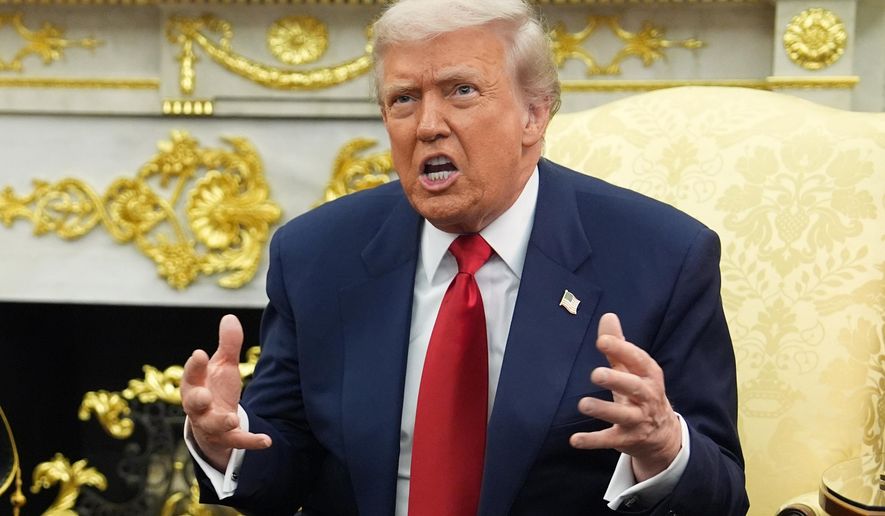President Trump’s sweeping tariffs are starting to have a tangible effect, according to Commerce Department data released on Wednesday, which showed a steep decline in imports and a narrowing trade deficit.
The U.S. Bureau of Economic Analysis said imports dropped by $18.4 billion, or 5.1%, to $340.4 billion in August compared to July.
Exports were relatively stable in August, at $280.8 billion — a $0.2 billion increase from the prior month.
As a result, the U.S. trade deficit narrowed by $18.6 billion, or nearly 24%, from $78.2 billion in July to $59.6 billion in August.
The change is significant because Mr. Trump implemented the full sweep of his trade plans in early August, after months of start-and-stop moves. Most countries face a minimum tariff of 10% on goods they send to U.S. markets, although rates vary and reach as high as 50% on products from India and Brazil.
The average effective tariff rate on foreign goods is 18.3%, or the highest since 1934, according to The Budget Lab at Yale.
Mr. Trump says other countries imposed tariffs on U.S. products for years, so he is sick of countries tapping into the rich American market while closing the door to American products.
His tariff rates were designed in part to close the trade deficits in which countries sell a large number of products to Americans but don’t buy nearly as much from U.S. producers.
Places like Japan, South Korea and the European Union knocked down their tariff rates by pledging to buy more U.S. products and investing in U.S. manufacturing.
“America’s trade deficit nosedived by an astonishing 16.4% in August 2025 over August 2024, driven both by surging American exports and declining imports — more proof that President Trump’s trade and economic agenda continues to pay off for the American people,” White House spokesman Kush Desai said. “As the president’s historic trade deals and pro-growth policies continue to take effect and trillions in investments to make and hire in America continue to materialize, Americans can rest assured that the best is yet to come.”
Some economists have questioned Mr. Trump’s approach by arguing that trade deficits are not inherently bad. Other countries make distinct products that Americans want, or supply goods more cheaply for U.S. consumers, resulting in mutual benefit.
Mr. Trump is willing to negotiate down tariff rates but says they are an effective tool for creating revenue, gaining leverage in diplomatic relations and driving manufacturing to the U.S.
A significant portion of his tariff plan faces a legal challenge.
The Supreme Court is considering a challenge from small businesses that say Mr. Trump overstepped by invoking a 1977 law to impose nation-by-nation tariffs unilaterally.
Key justices seemed skeptical of Mr. Trump’s approach, saying Congress is traditionally tasked with raising revenue.
Mr. Trump’s tariffs on steel, cars and other key sectors are not impacted by the case, and he might seek alternative authorities if his nation-based tariffs are struck down.
• Tom Howell Jr. can be reached at thowell@washingtontimes.com.




Please read our comment policy before commenting.